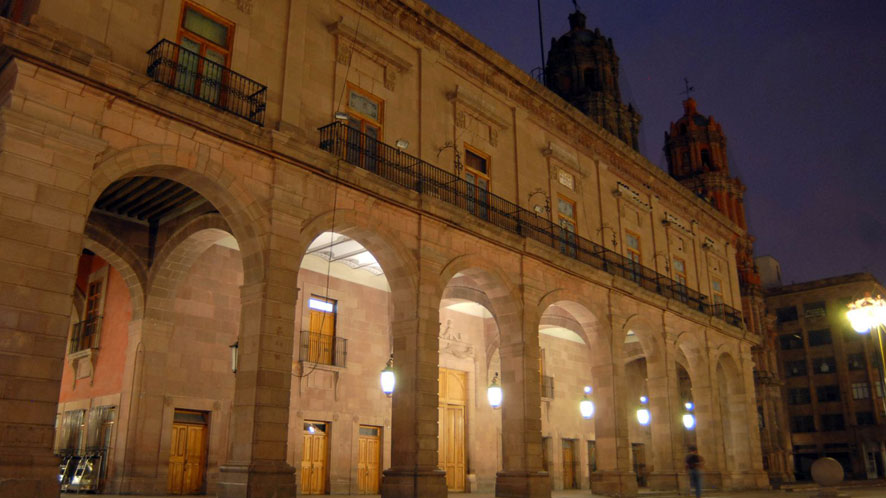Currently the headquarters of the Executive Power of the State, these Royal Houses were built on the instructions of the Visitor José de Galvez after the existing tumults due to the expulsion of the Jesuits by orders of Carlos III in the 18th century. Neoclassical style, its facade is simple and elegant, has 4 pilasters which stand out in the center of the building. In 1950, after continuing with the remaining parts of the building, it was inaugurated.
Inside is the first court of the State, the Sala Ponciano Arriaga Leija, the Sala Hidalgo, where you can see an oil painting by the priest Hidalgo, a copy of the one in Dolores Hidalgo, Gto.; and four oil paintings by the heroes José Mariano Jiménez (Máximo insurgente Potosino), Vicente Guerrero, Guadalupe Victoria and José María Morelos, ordered by the first Constituent Congress and the Sala Juárez, a plaque on the eastern wall recalls that on two occasions, 1863 and 1867, it was inhabited by President Benito Juárez (accompanied on that occasion by ministers Sebastian Lerdo de Tejada, José María Iglesias and Ignacio Mejía); in the center, the table on which it is said that he signed the denial of pardon for Maximiliano, Miramón and Mejía. The wax sculptures of Juarez and Princess Salm-Salm who prayed for their lives want to remember this fact.
In 1815, the last mayor was Felix María Calleja del Rey, Colonel Agustín de Iturbide, who was later the first emperor of Mexico; Antonio López de Santa Anna, President of Mexico, in 1823; Anastasio Bustamante y Oseguera, Constitutional President of Mexico.

